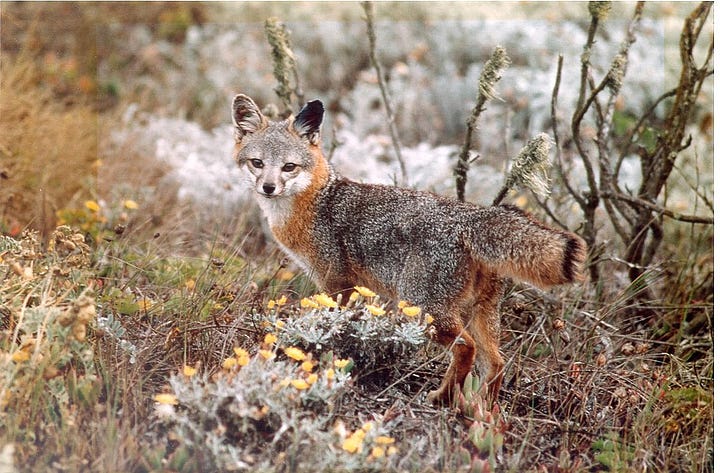I think that it would be logical to assume that most of the time an animal is what it is called. An elephant is an elephant. An armadillo is an armadillo. But a fox isn’t always a fox.
A fox is an animal in the genus Vulpes. They are distinguished from other canid animals (dogs, wolves, coyotes and jackals) by their smaller size, longer bushier tail, flatter skull and the tip of their tail often being a different colour. There are twelve species of true fox, including the Red Fox (Vulpes vulpes), the Fennec Fox (Vulpes zerda) and the Arctic Fox (Vulpes lagopus).



Although these animals look quite different, they still all have the defining features that make them a fox. And most importantly, the genetics. All of these animals, at one point in history, had a common ancestor. They share this ancestor with nine other species. All twelve species make up the genus. But there are many ‘foxes’ that aren’t included in this group.
This includes the crab-eating fox (Cerdocyon thous). The first hint that this ‘fox’ isn’t a true fox is in it’s species name. True foxes must be in the Vulpes genus, whereas the crab eating fox is in Cerdocyon - which translates from Latin as fox dog. The crab-eating fox lives in a variety of different habitats in South America, and gets it name from the fact it finds much of its food, including crabs, by scouring the mudflats. Although it does have some physical similarities to true foxes, it actually isn’t closely related at all. But this does explain why it got its name in the first place. Many animals were named on physical traits alone, giving room for disagreements on which category they best fit in at the time. For example, the crab eating fox used to be Canis thous. It was first classified in 1766 but it was moved to a different genus in 1839 when it was agreed that it wasn’t a true fox at all.
There is another genus of false foxes in South America called Lycalopex, which translates as wolf fox. This includes the Culpeo (otherwise known as Andean Fox), Darwin’s fox and the Pampas Fox. These animals are all closely related to each other and are known collectively as the South American Foxes, of which there are six in total. They are actually move closely related to wolves and jackals than foxes. It is thought that they look like foxes because of convergent evolution. This occurs when a successful trait is adopted by more than one species that isn’t related, because the trait is so useful. For example, if you consider birds and bats, both have adapted to fly but that isn’t because they are closely related. This is the same for the short stature, ear shape and bushy tails for both true and false foxes. These traits are just really useful to them so they have evolved twice, but completely separately.



There are thought to be at least 10 species of false fox in total. Some are the only species in their genus, like the Bat-eared fox (Otocyon megalotis). This animal isn’t closely related to any of the others we have seen so far despite its appearance, which is similar to the fennec fox. It’s genus - Otocyon - translates to ear dog and you can see why. It lives in East and South Africa and is the only true insectivorous Canid.
Finally, there is the genus Urocyon which means tailed dog. This genus is thought to be the most basal genus of canids, meaning that it is thought to be the oldest. It has just two living species, the Island Fox and the Gray Fox. It is possible that in the future more species of this genus will be found as there is another animal known as the Cozumel Fox which is very rarely seen which could be another member of this genus.


So, it turns out that you can’t trust a common name of an animal to be true. And this isn’t just the case for foxes. There are many other animals who fall prey to this too, such as the mountain lion, which isn’t a lion. Killer whales aren’t whales, they’re dolphins. The red panda isn’t a panda. However, without an encyclopaedic knowledge of Latin and Greek to understand scientific naming it can be hard to tell and I don’t think many of us have that. But in zoology, it pays to stay suspicious because for almost all of history a lot of people just did what they felt like at the time and then argued about it later. However, it isn’t so easy to argue now with DNA technology which gives us answers once and for all.
For example, Darwin’s fox was first described in Europe in 1834 by, you guessed it Charles Darwin who was quoted as saying “He allowed me to walk behind him and actually kill him with my geological hammer”. I guess if you kill something, it gets named after you? And after all that, it isn’t even a fox so it proves that the whole naming process is warped. At least with the crab eating fox it tells you what it eats and not just who killed it!






